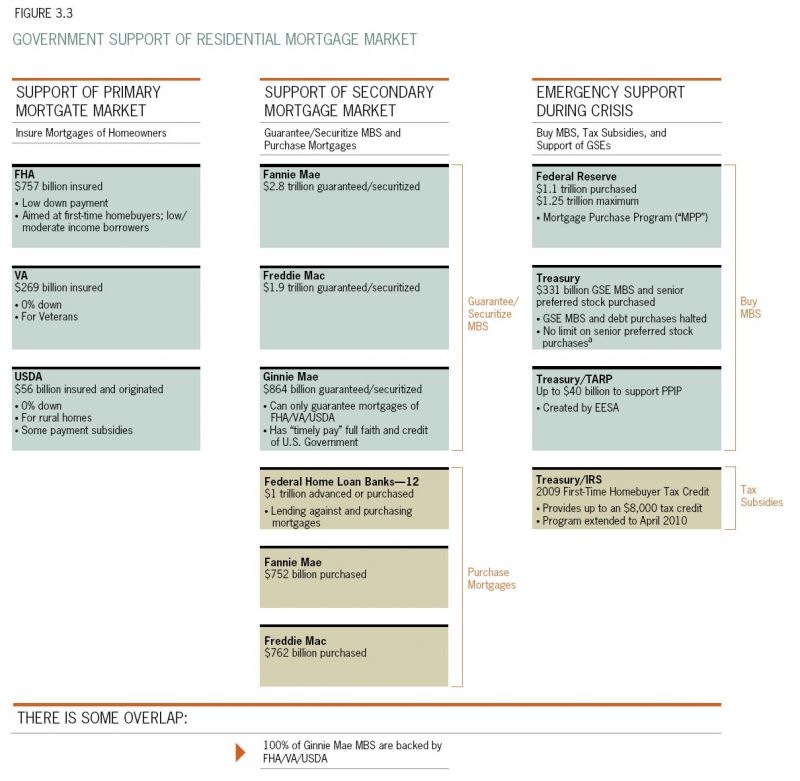
Image from SIGTARP report. Click <a href="http://www.zerohedge.com/sites/default/wp-content/uploads/images/user5/imageroot/madoff/Mortgage%20Market.jpg">here</a> for a larger version.
There’s plenty to sink your teeth into in the latest report to Congress [PDF] from Neil Barofsky, the main bailout watchdog, including yet more questions about the Treasury and Federal Reserve Bank of New York’s handling of AIG’s rescue. In essence, Barofsky, whose title is special inspector general for TARP (SIGTARP), calls the Treasury hypocrites for failing to extract concessions from AIG’s counterparties (like Goldman Sachs and Societe Generale) when they did just that with General Motors and Chrysler’s creditors during the automotive bailout. Barofsky’s report also criticizes the Treasury for failing to anticipate the backlash over AIG’s post-bailout executive compensation, especially to its Financial Products division that was at the epicenter of the financial meltdown.
But arguably the most fascinating finding in the SIGTARP report is the extent to which the federal government now backstops the housing market—in short, the federal government today is the housing market. According to SIGTARP, in the past two years, the private sector has shed $1.5 trillion in mortgage assets, and it’s the government who’s filled that massive void. “Between net mortgage lending and existing mortgage management,” the report says, “the Federal Government now completely dominates the housing mortgage market, with the taxpayer shouldering the risk that had once been borne by the private sector.” As the above chart shows, the government’s support of the housing market nears a staggering $11.5 trillion.
More worrying than the size of that support, without which frankly there wouldn’t be a housing market, is the fact that it could be ending soon. As the Washington Post recently reported, the federal government plans to wind down some of that backing in the next couple of months, and when that time comes, officials say they hope the industry will stand on its own. But as the SIGTARP report shows, that’s blind optimism; a major pullback in housing support could very well send the industry into freefall again and derail the glimmers of recovery we’re now seeing. It could undercut the Obama administration’s stimulus efforts, and possibly drag Obama’s support down with it. Even with government support, housing’s future is very much unclear—foreclosures set new records last year, too many homeowners still owe more than their houses are worth, more people are voluntarily defaulting and walking away from their homes. Yet the federal government wants to walk away from the industry itself sooner rather than later.
If SIGTARP’s findings reveal anything, it’s how much the government’s backstopping is critical to economic recovery. Without it, we could see shades of 2007 and 2008 all over again.

















